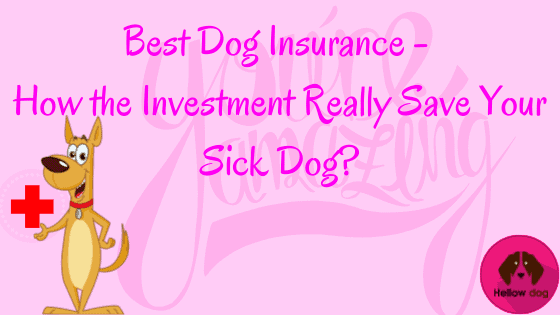If you own a pet, you understand why they’re regarded as man’s best friend. Indeed, they become a member of the family, and many people love to include them in their getaway plans. While this might demand a little more planning, it can also be a delightful experience for you and your pet.
Therefore, if you’re looking to depart for a cabin holiday with your pet, it’s best to ensure all the necessary arrangements are in place. This way, you can fully relax knowing your best friend is well looked after. Additionally, if you’re going on a vacation for the first time with your recently adopted pet, you’d want to go the extra mile to prepare for a safe and satisfying holiday trip. This sets the stage for future holidays for both of you.
That said, here are some tips for planning a cabin holiday with your pet:
1. Choose Pet-Friendly Destinations
You get so much freedom in terms of accommodation, dining areas, and other fun places when you’re holidaying on your own. However, there might be limited options when you’re with a pet because they are prohibited in some destinations. Besides, some cottages and rentals may not allow pets to stay, so you must prepare beforehand by researching the ideal cottages suitable for lodging and fun activities. You can check out vacation rental properties and their detailed information about their offerings on their websites.

For instance, if you fancy hot tub holidays and want your puppy to enjoy the same, you can check online for a dog-friendly cabin with hot tubs. Moreover, look outside if it’s safe and has adequate space for your pet to play around after a soak. If the cottage meets all your vacation needs, it’s best to make your reservations early. While at it, you’d want to inquire about the following:
- Whether you’ll pay an extra pet fee
- If they permit all breeds of pets
- If pets can be left indoors on their own
- The number of pets allowed in a room
- The places that are off-limits for pets
- The designated pet waste areas
In addition, here are some etiquettes to be ready for when lodging with your pet:
- Clean up after your pet so as not to leave any dirt in the room. Always have a cleaning cloth or disinfectant to tidy up any possible mess in public, too.
- Keep your pet stimulated to ensure they’re calm in public spaces and prevent any destructive behaviors.
- Don’t leave your pet alone indoors unless it’s unavoidable. If you have to, you should notify the property managers and ensure it’s only for a brief time.
On the whole, strive to arrange a home-from-home stay for your pet throughout the holiday.
2. Consult Your Vet before Traveling
A veterinarian is an expert on pets, so you should inquire about your dog’s health before traveling. If they foresee any complications, they may administer the necessary treatments or recommend medications for the trip. They’ll also evaluate the destination and determine whether your pet needs extra vaccination. Then, you’d want to research local vets within your travel destination to prepare for immediate care in case your pet gets hurt or ill during the holiday. If you find one, save their details and keep them close throughout the vacation.
3. Decide On The Appropriate Modes Of Travel
This includes the primary means of travel to reach your destination and the secondary modes to help you navigate the town or city you intend to tour. If you’re looking to use public means, you should understand regulations for traveling with pets. Luckily, with private vehicles, you don’t have to follow any specific rules.
Depending on your destination, the following are the different modes of travel you can opt for:
- Air travel: This depends on the size of your pet and the airline regulations. If it can fit in the space in front of your seat, it can be considered a carry-on in the plane cabin. However, if it’s big, it will have to travel in the cargo hold, and you’ll require a well-ventilated kennel.
- Taxis: This is ideal for shorter distances, like when moving around the vacation spot.
- Rent a vehicle: Hiring a car for the entire trip can be more convenient and cost-effective.
- Buses and trains: These can work for long distances, and your pet can sit on your lap, in a pet bed, or carrier. However, you may not control the number of stops on the route.
Thus, ensure you arrange modes of transport that give you and your pet the utmost comfort before leaving home. Take time to understand all the pet policies associated with each means, too. For example, if you’re traveling overseas, you might be required to have the following documentation:
- Pet passport
- Health sign-offs, such as negative rabies tests for dogs, health certificates, and data on all the vaccinations
- Proof of microchip for pet admission
Your vet can assist you in compiling all this paperwork beforehand to avoid inconveniences.

4. Pack All The Essential Supplies For Your Pet
You’ll require basic requirements to travel comfortably and enjoy a cabin holiday with your pet. Here are some things you should pack before setting off:
- Potty bags and pads for waste disposal
- The treatments your pet uses or those recommended by your vet for the holiday
- Adequate food supplies in airtight containers. You can check out the brands your cottage provides or research an appropriate place to buy your pet food locally in case of a shortage.
- Brush and other grooming items
- Portable food dishes and water bowls
- An adequately ventilated travel crate
- An extra collar and identification tags
- A seat belt to keep your pet safe, especially when using a car
- A pet bed for your pet to sleep on
- A first aid kit with supplies such as bandages, tweezers, and antibiotic ointments
It’s best to purchase all items earlier and have a separate bag specifically for your pet. Further, depending on the weather conditions of the area you’re visiting, you may want to pack items like protective footwear, a jacket, a sweater, or a soft muzzle.
Your pet may be uncomfortable on arrival because of the unfamiliar surroundings, so owners should carry items their pets are accustomed to, like their favorite toys and blankets. This eases the unsettling feeling, and they’ll start to loosen up.
5. Plan Plenty Of Stops
Going for a trip with your pet is just like riding with a kid. The long hours of traveling and sitting can make it restless or edgy. So, plan for bathroom breaks and some minutes for your pet to stretch out and get some fresh air. You can also organize to build flexibility and, simultaneously, explore the scenery around you during such stops. Likewise, you should understand the appropriate patterns to feed your pet during the main journey and if you have short trips while at your destination.
Dogs, for instance, may throw up or defecate when they overeat a few hours before a trip, especially on bumpy roads. You can prevent this by scheduling their meals early, ensuring they exercise well, and relieving themselves before departing. However, close monitoring of your pet is ideal to determine any uneasy behavior.
6. Ensure Your Pet is Highly Trained
Before taking your pet to any cottage, you should first ensure it’s well-trained. That is, it should be able to obey basic commands like ‘sit’ or ‘stay.’ That’s why it’s best to spare some time for training before leaving for the holiday. You can even try them out with shorter trips; if it goes well, you can fully prepare for an eventful getaway. If they can’t handle it, you should keep practicing and plan more short outings to give them enough time to adjust.

7. Learn All The Safety Precautions
While a holiday with your pet attracts a lot of excitement, there are also potential risks that you may encounter. Here are some safety precautions you ought to understand and follow during your vacation:
- Check if your cottage has a secure garden to ensure it can’t escape.
- Watch out for cliff edges and streams when you let them move freely during a walk.
- Restrain your pet safely when traveling by buckling its harness to the seatbelt. It increases safety during an accident or vigorous journey.
- Keep your pet’s head inside the vehicle on the road to prevent head injuries.
Your pet should also have an ID in case it gets lost, especially in busy areas or foreign locations. For example, you can get your pet a GPS collar to enable remote detection.
8. Arrange For Their Routine Activities
Pets develop specific habits for feeding, walking, and other daily activities, so they may get worried and upset- if you don’t stick to this routine as the owner. Hence, even as you plan a tail-wagging holiday for your four-legged friend, you’d want to cater to the above needs in their usual timelines. For example, if you usually go for morning walks, you can arrange it during your holiday.
Conclusion
Going for a cabin holiday with your pet makes the trip more exciting. Withal, you must plan well to ensure your pet is comfortable, healthy, and safe throughout the vacation. Therefore, you’d want to find pet-friendly cottages, pack all your pet supplies, talk to your vet for health clearance, and use the proper means of transport. Furthermore, train your pet beforehand, arrange for breaks, understand the safety precautions, and stick to its routine to ensure you’ll have a magical experience with your best friend by your side.







